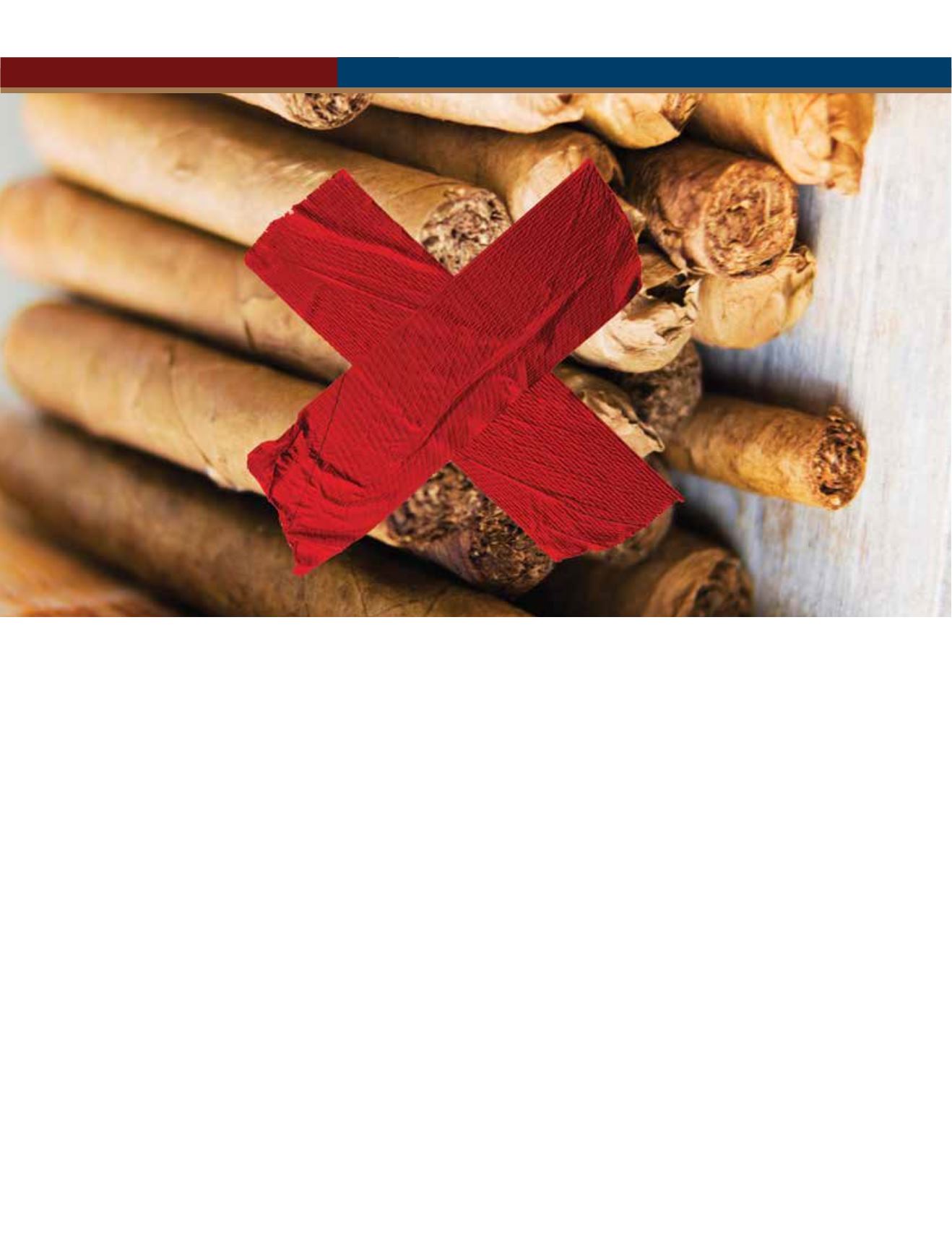

CRA’S CIGAR CORNER
BY J. GLYNN LOOPE
T
he year is 2020. The trauma of
the first measure in the history
of America to regulate premium
handmade cigars by the federal govern-
ment has taken hold. The aftermath of
that morning, May 5, 2016, while almost
being a distant memory, is now being re-
membered as the most dramatic turning
point in the history of this artisan in-
dustry. The ramifications of it, however,
are still being viewed with shock by the
surviving manufacturers and retail tobac-
conists, and a legion of consumers with
their own share of concerns.
While the fall season of 2016 quickly
arrived and the initial set of cigar regu-
lations began, the industry anxiously
awaited the outcome of the election sea-
son, hoping that it would spark a change
in management at the U.S. Food and
Drug Administration (FDA), responsi-
ble for that initial listing of 499 pages of
regulations. Companies began to register
with the government, noting their con-
tact information and a list of the cigars
they produced.The initial rule that called
for a ban on samples began, sparking an
uncomfortable feeling when cigars were
exchanged between friends, company
representatives and retail tobacconists.
Were they breaking the law? Or were
they simply harkening back to the days
when exchanging cigars was a simple act
of friendship, or just an effort to discover
a new blend or favorite new cigar? No
one knew. It was a new form of social en-
gineering by the government.
But then the real impact started to
settle in. Companies had to begin sub-
mitting applications for new cigars or
working every conceivable angle to get a
substantial equivalence (SE) exemption
or path to market. The estimated 5,000
hours some said it would take to com-
plete the application process proved to be
true. Lawyers and consultants were rush-
ing in to snatch up clients, with promises
of approval if you used their services—
for a hefty fee.
However, the vision of a federal bu-
reaucracy unprepared for the onslaught
of requests proved true as well. While
the FDA was still behind by thousands
of applications for cigarettes and smoke-
less products, the initial round of more
than 10,000 cigar applications swamped
the agency and created a backlog that
would, according to one projection, last
for three to five years.
The mandate that laboratory test-
ing be conducted for new and existing
blends also created a slowdown, even for
the wealthiest and most sophisticated of
companies. In some cases, the technol-
“Once Upon aTime…”
Cigars in the future will be determined by what we do today.
86
TOBACCO BUSINESS INTERNATIONAL
SEPTEMBER/OCTOBER 2016
















